A Helpful Guide on How to Plan Bedroom Lighting For a Space That Feels Dreamy, Day and Night
Planning bedroom lighting well is all about allowing you to adjust the mood at the touch of a button — we explain how to get it just right
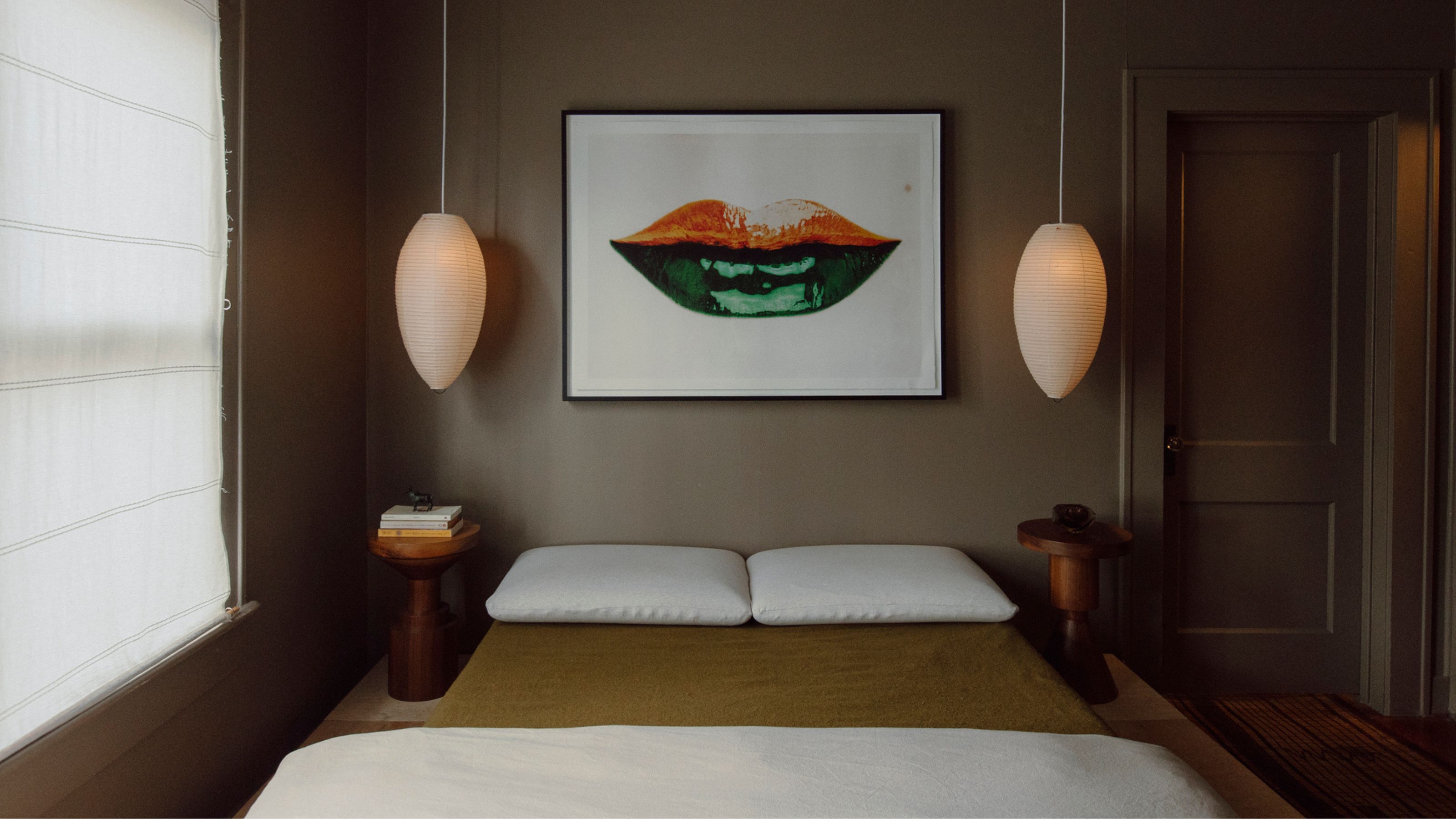

As a room meant for rest and relaxation, the way you plan your bedroom lighting is just as important as the furniture you choose and the colors you paint your walls with.
Bedroom lighting ideas need to do far more than perform a practical role — they also need to be able to adjust to whatever is going on in the space and be capable of creating just the right mood as and when required. When you think about how much time we spend in our bedrooms — sleeping, getting ready, and relaxing — it's clearly an important design element to consider.
"When I’m working on a lighting plan for a bedroom, I’m always focused on creating a warm, inviting atmosphere that feels like the perfect retreat and a place to relax and recharge," says Carolyn Cerminara, founder and principal designer at Cerminara Design.
So, if you are dreaming of a soothing, tranquil space in which to unwind at the end of the day, as well as one that makes waking up in the morning something you look forward to, here is our expert guide to planning your bedroom lighting.
1. Use multiple sources of light for flexibility
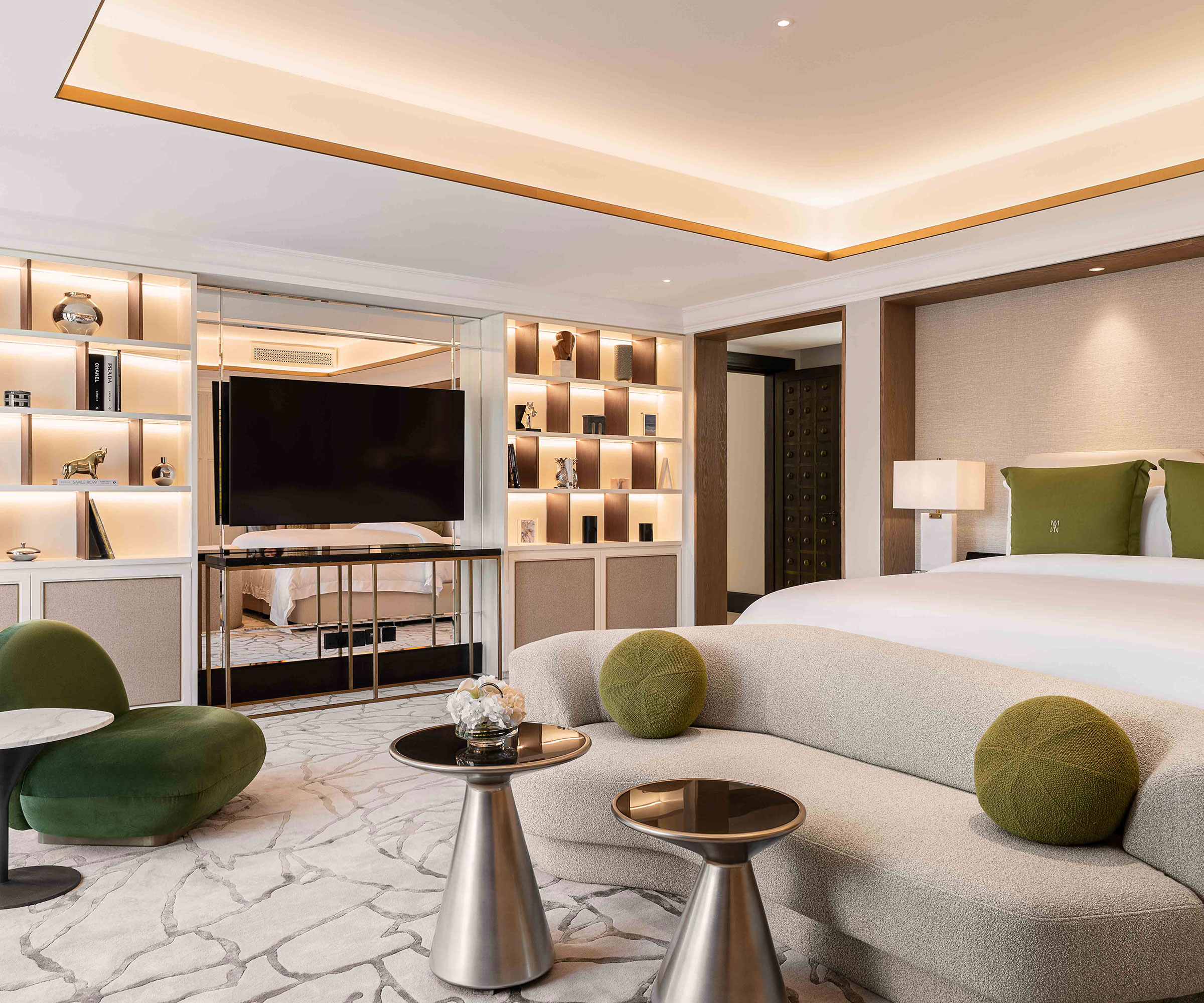
Creating a layered lighting scheme means using different types of light, all with a different purpose, together. This is so that you can conjure up a range of moods as well as carry out different activities, and is perfect when it comes to how to make bedroom lighting cozier. The three main types of light are ambient (for background lighting), task and accent, for highlighting certain features of areas of the space.
"When planning your bedroom lighting, incorporate a mix of ambient, task and accent lights for versatility," advises Dara Greaney, CEO and founder at LED Light Expert. "Start with the main lighting and use dimmable ceiling lights or floor lights for general illumination. Then add bedside lamps, floor lamps or wall sconces for reading and to create ambiance."
"Ambient lighting is important as the main light source in the room, to actually see things — this can come from overhead ceiling lights," says Marlena Kaminska, a designer at ValueLights. "But, if you’re looking to create mood lighting and maybe even highlight architectural features, accent lighting is the best suggestion. This could vary from wall sconces to LED strip lighting.
"Don’t forget specific task lighting too — if you enjoy reading at night, a simple bedside lamp or spotlight can help aid reading as well as reduce lighting to help you drift off to sleep," continues Marlena.
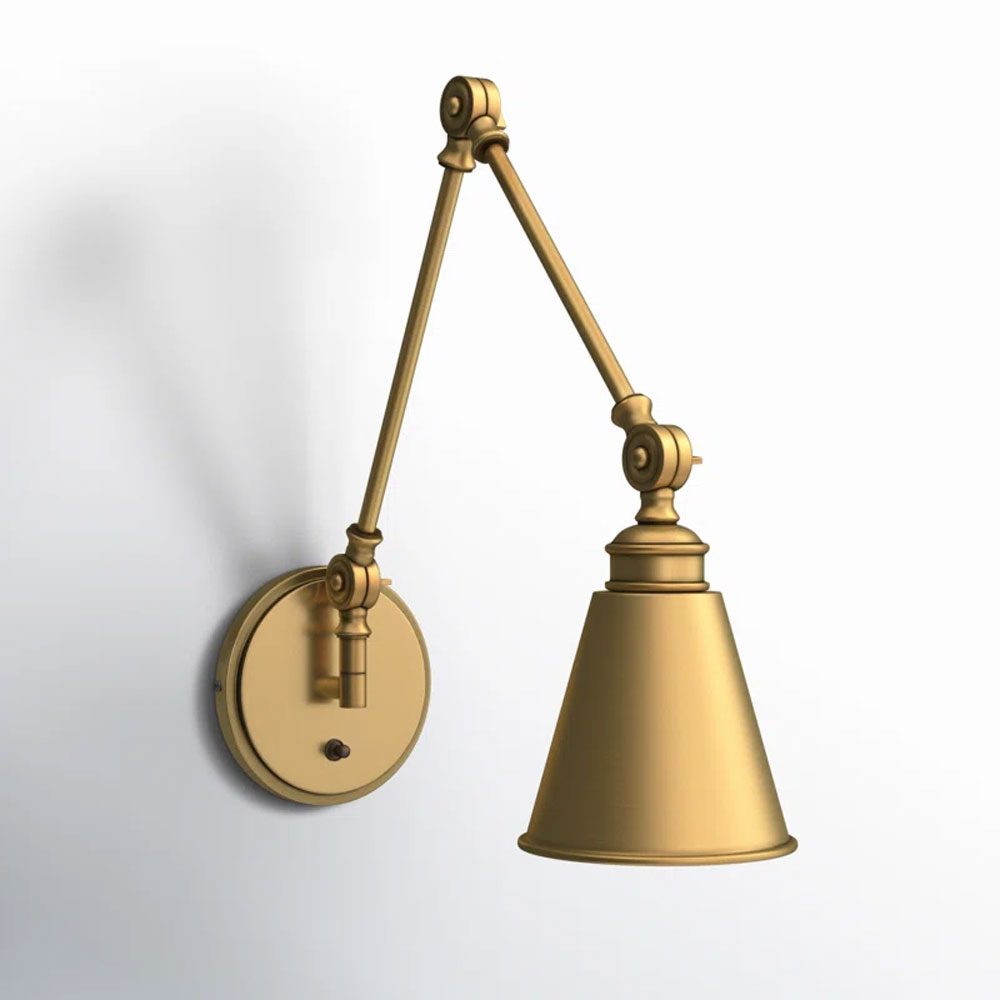
Price: $169, Was: $225
Perfect for keeping bedside tables free, this wall-mounted, fully-adjustable swing arm lamp can throw out light to wherever it is needed and allows you to neatly tuck it out of the way when not in use.
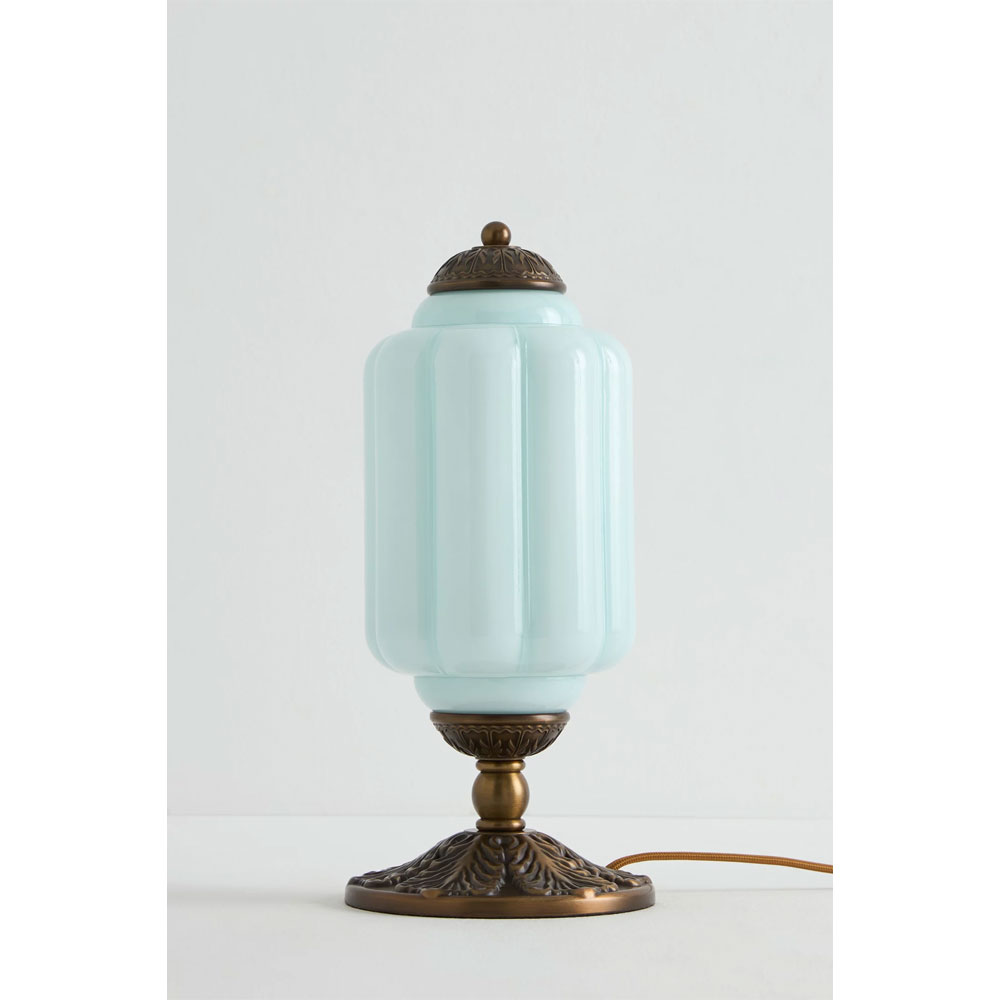
Price: $198
We love the elegant, pretty design of this glass bedside lamp, with its milky glass shade and brushed brass base. It comes in seven other colors in addition to the blue and is perfect for injecting a little charm.
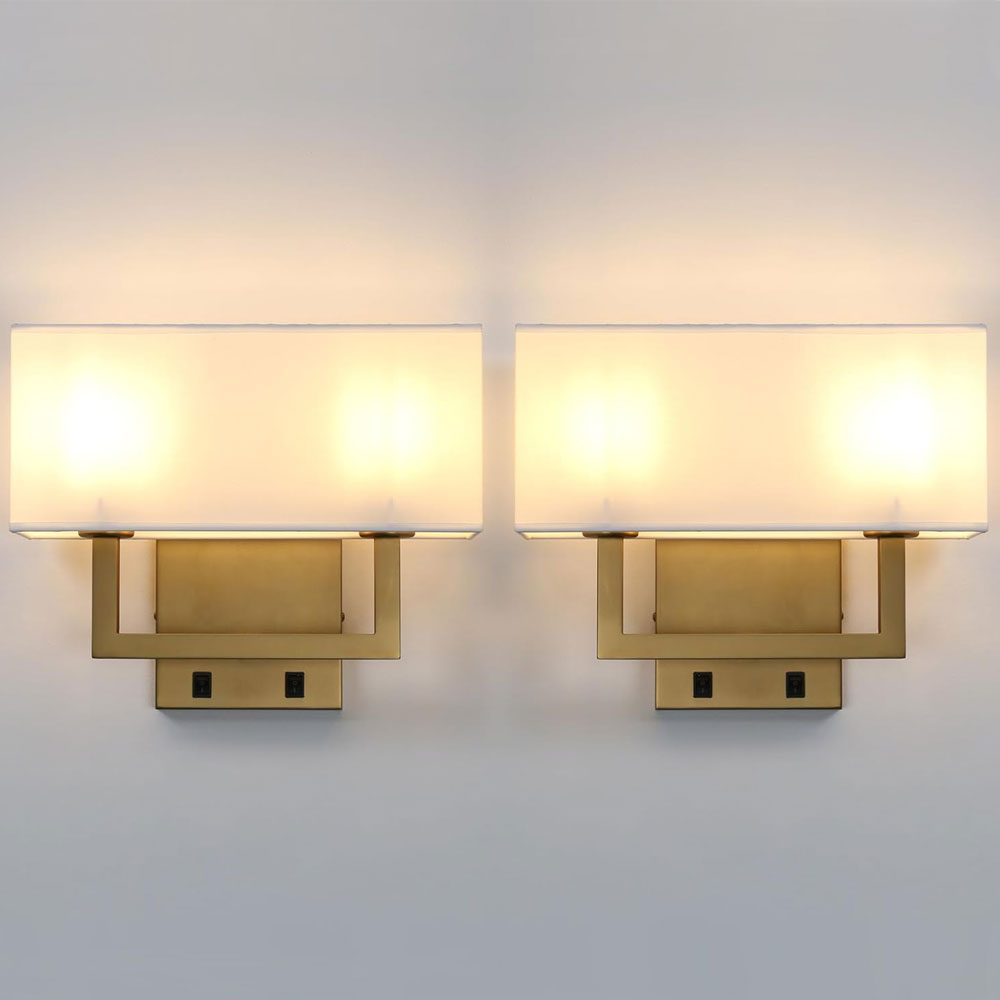
Price: $110.19
Wall sconces are perfect for bedrooms, washing the walls with a gentle glow. This pair is ideal for mounting either side of the bed and can be hardwired and used alongside a dimmer switch too.
2. Add in a little drama with a bold ceiling light

Ambient light — also known as background or general lighting — is what we rely on to illuminate the entire space, forming the first layer. That isn't to say the source of your ambient light can't be something eye-catching that adds to the overall decor of the room.
"Start with ambient lighting, such as a stunning chandelier with a color temperature around 2700K," suggests Carolyn Cerminara. "The style of the chandelier depends on the height and shape of the room. While you don’t want to overwhelm the space with a light that’s out of scale, the bedroom is a place where you can afford to make a bold statement, so don’t be afraid to push the boundaries with something dramatic yet elegant."
If you are working with a low ceiling, a different approach might be needed.
"Ceiling lights can often become the centrepiece for a bedroom, but if your bedroom ceiling is low then you need to be practical and go for a flush-mount light," says Marlena Kaminska. "If you want to go for a modern look, recessed lighting — a light fixture that is installed into the ceiling, such as a spotlight — can provide a clean look.
"That said, a chandelier or statement light can really be the cherry on top of a bedroom, if you have the space to accommodate this," adds Marlena.
If you are asking does every room need a ceiling light, then the answer is no. Your ambient lighting can be provided by wall lights too.
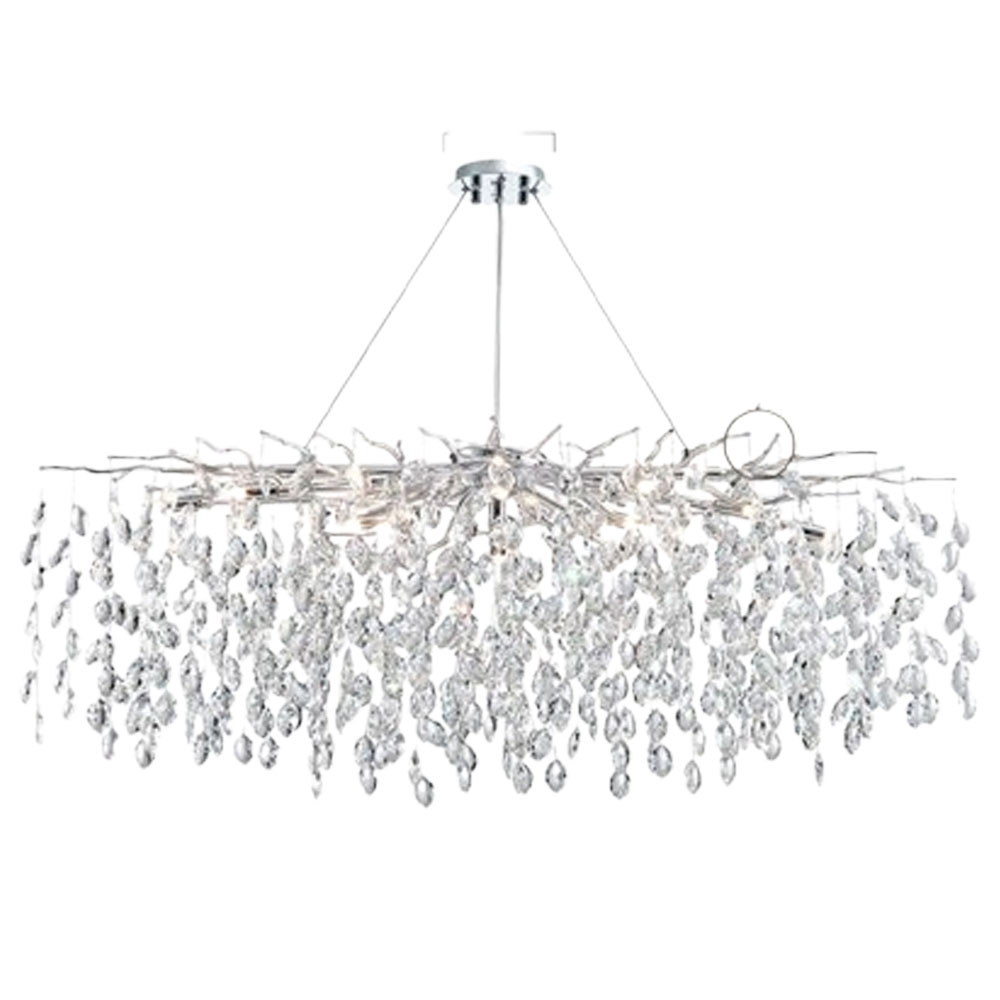
Price: $629.99 Was: $799
Managing to be both romantic as well as contemporary in its design, this glittering silver chandelier would make the perfect source of ambient lighting in a bedroom.
3. Make great bedside lighting a priority
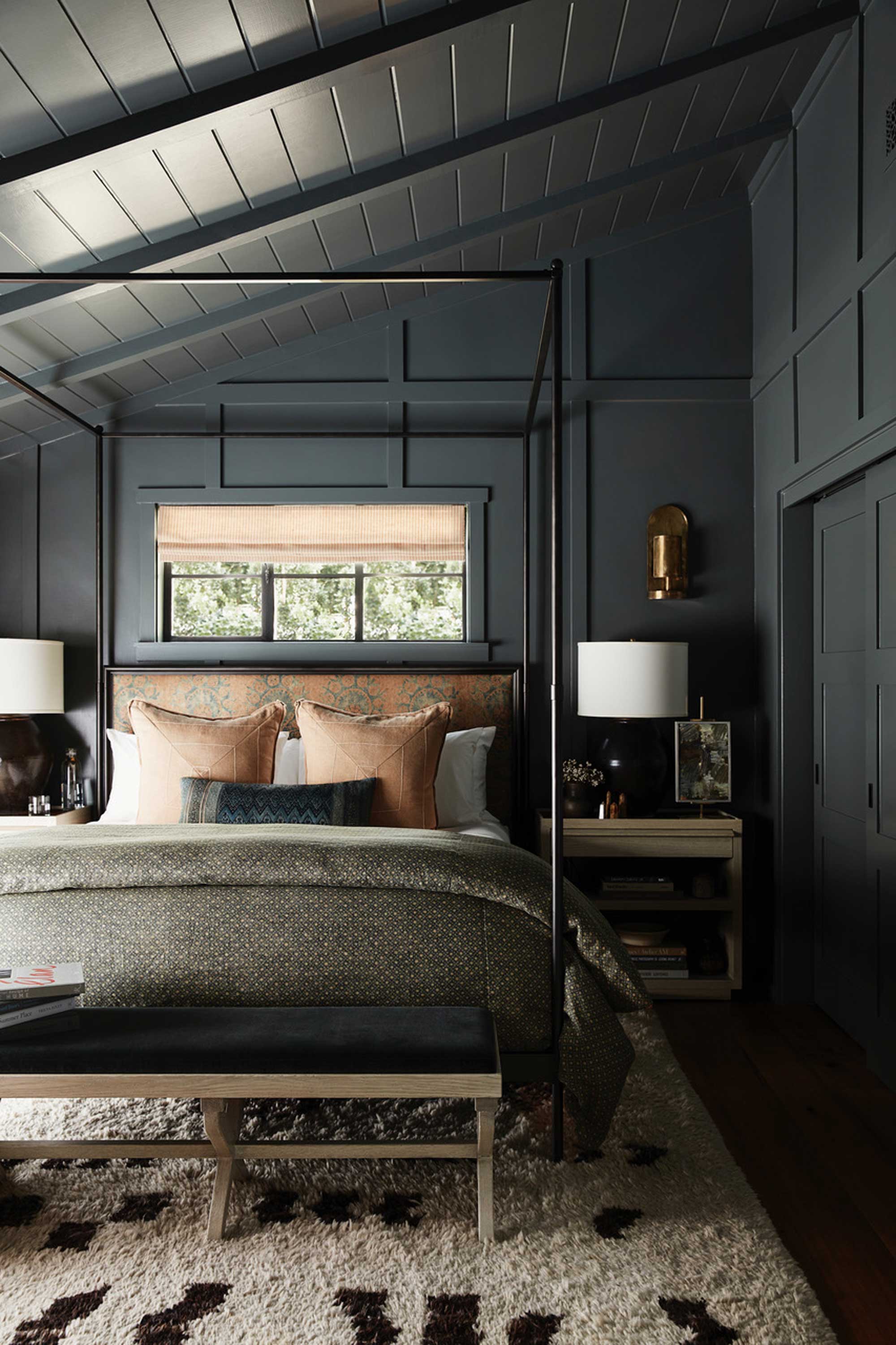
Bedside lighting is so important, not only when it comes to providing a source of light for reading, but also in the way it can add a cozy, soft glow to your bedroom ideas that can be hard to achieve with an overhead light. It also means you can turn on the lights in the night without having to leave the comfort of your bed.
"Bedside lighting is the key to grounding your bed and making it functional for nighttime," says Victoria Holly, interior designer at Victoria Holly Interiors. "We love to do either a table lamp, sconces or pendant lights hanging either side of a bed. Try to use dimmers where possible. And if you don’t want unsightly switches on either side of your bed, you can also use a Lutron Pico switch and keep the remote in your bedside drawer."
"Adding shaded bedside lamps with dimming capabilities is the easiest way to create a soft glow," adds Jennifer Jones, founder and principal designer of Niche Interiors. "We are obsessed with Philips Hue smart LED bulbs from Amazon which can be used in any lamp and dimmed and controlled with your phone."
4. Save table space with bedside wall sconces
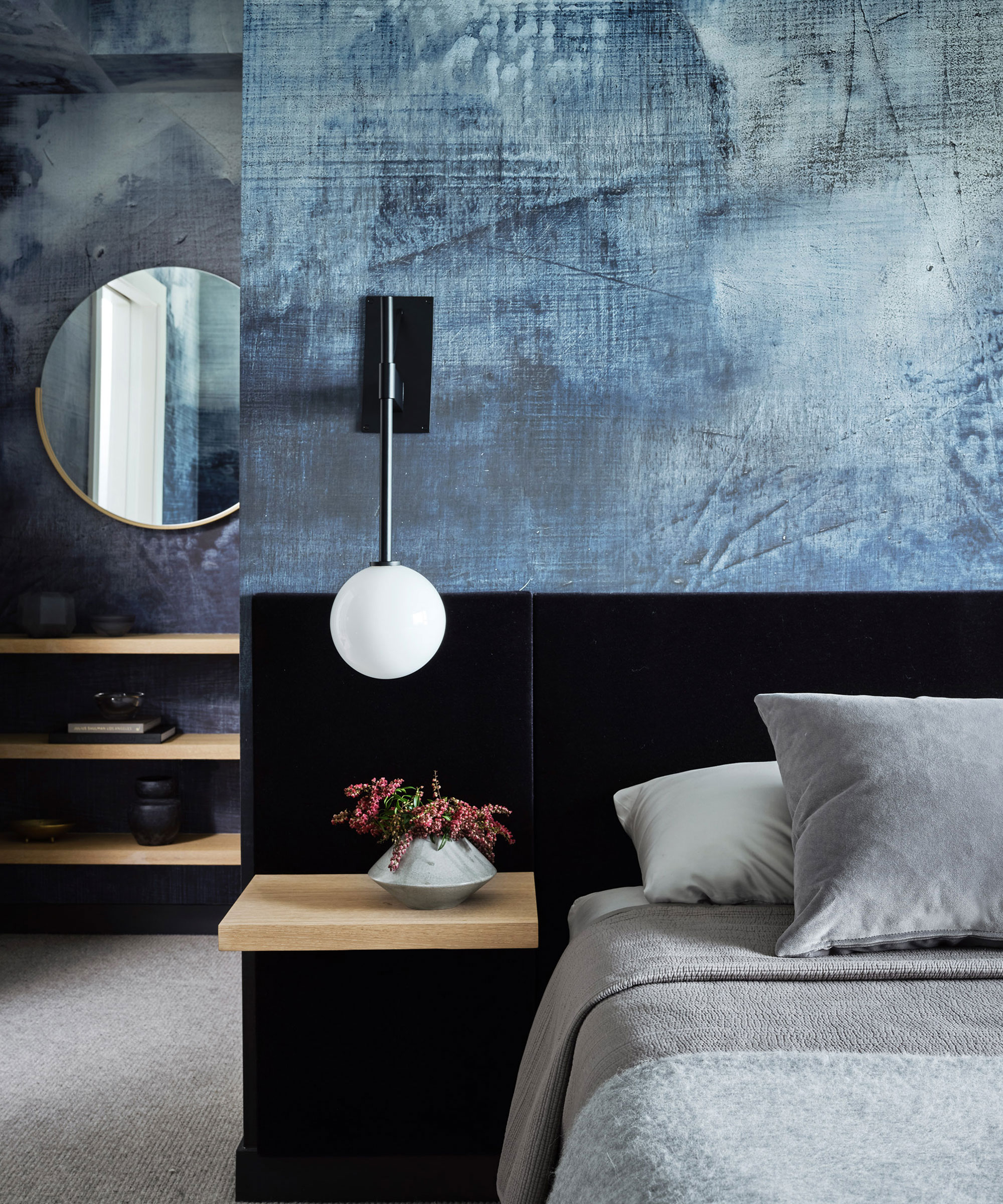
Bedside table lamps aren't the right solution for everyone. Those after small or alcove bedroom ideas who are short on space for larger bedside tables, for example, might prefer a wall-mounted fixture instead.
"Wall sconces save space, while floor and table lamps offer more flexibility," points out Joel Worthington, president at Mr. Electric a Neighborly® company.
"Wall sconces allow you to save space, which is great if you’re space-poor," says Marlena Kaminska. "However, floor lamps enable you to move your furniture around and create a certain aesthetic. I’d opt for floor lamps if you have more space to work with."
The options for alternatives to bedside lamps don't stop there either.
"Wall-mounted swing arm lights free up surface space and provide adjustable illumination for reading or ambiance," points out WG Hickman, owner at Tri-County Air Service. "Or you could consider under-shelf or headboard-mounted LED strips [like these from Amazon] with dimming options for a modern, minimalist touch."
5. Make dimmable lighting a priority
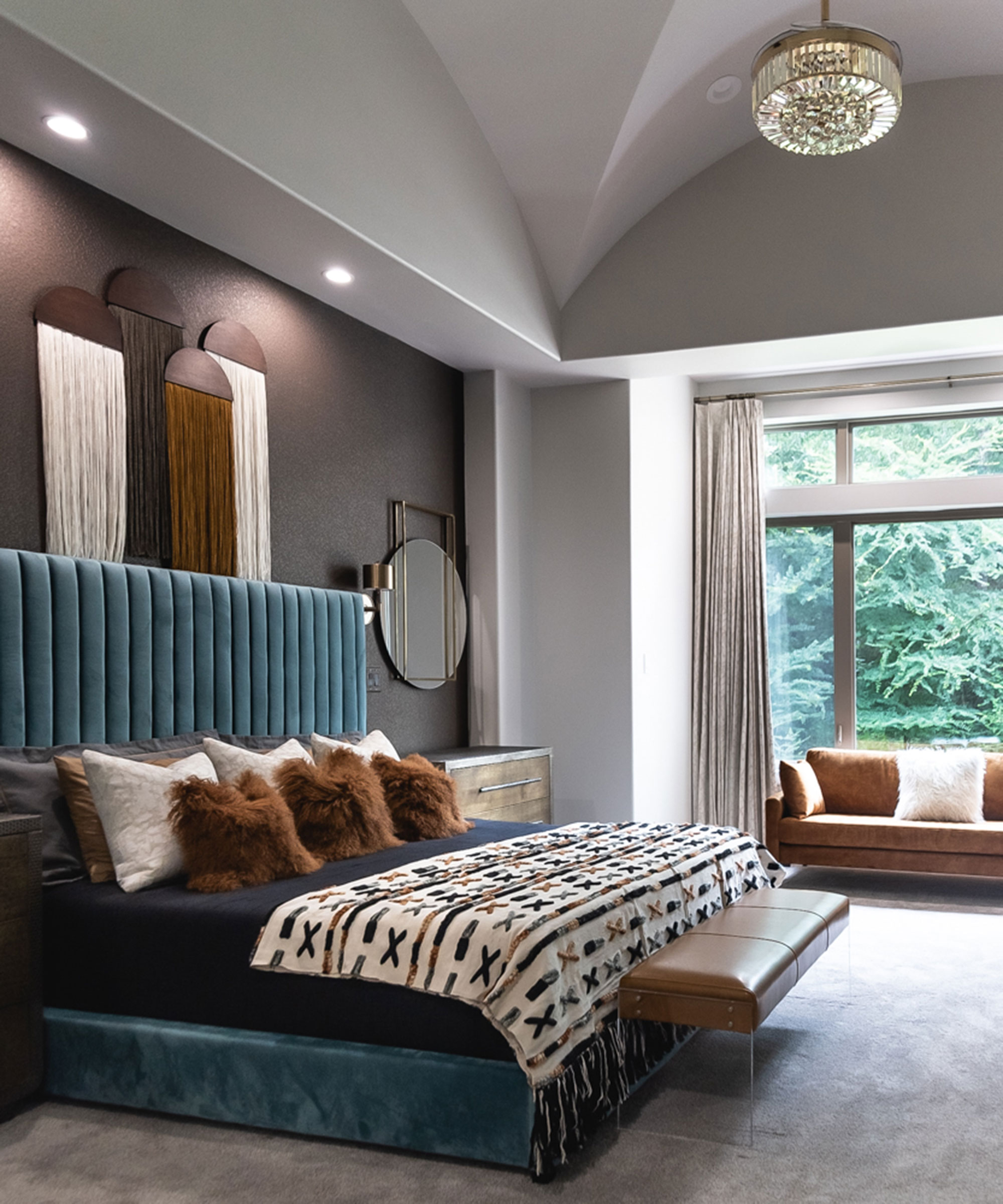
The bedroom isn't just a room that we spend time in once darkness falls and, for that reason, adjustable lighting is really important — plus it ties in nicely with more modern bedroom ideas.
"Whether you’re getting ready for the day during the cold dark mornings, or you’re settling in for the evening reading a good book in bed, your lighting needs to work for every season and occasion," explains Marlena Kaminska. "So, dimmable lighting is my practical suggestion. It allows you to adjust the color and temperature depending on what you’re doing."
"My golden rule for bedroom lighting is to install dimmers on every fixture," says Carolyn Cerminara. "They give you complete control over the mood, whether you want a bright, functional light or a soft, cozy glow.
"At the end of the day, your bedroom lighting should strike the perfect balance between functionality and elegance, creating a sanctuary that feels both stylish and serene."
6. Mix and match color temperatures
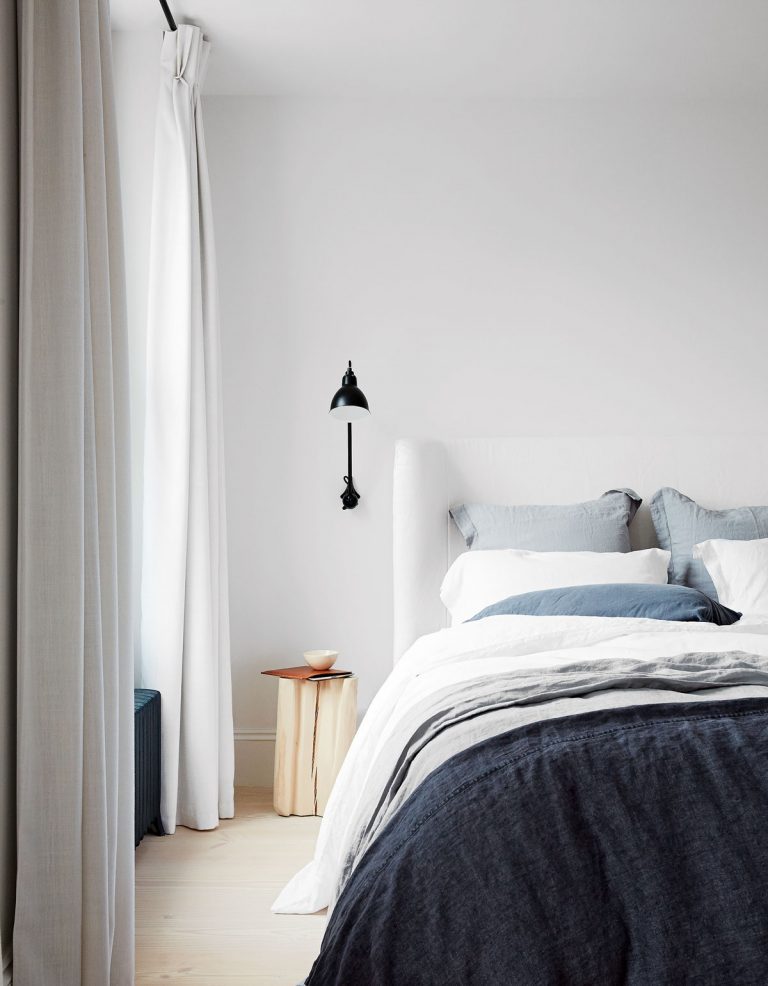
The term 'color temperature' refers to how warm or cool a light source is. Warm lights tend to have a yellow glow, while cool emit more of a blue hue. Color temperature is measured in Kelvins (K).
While some rooms only really need one color temperature — functional spaces, such as laundry rooms, for example, benefit from neutral or cool tones — in the bedroom, it is a good idea to mix things up a little, just as it is when looking at how to plan living room lighting.
"Instead of focusing solely on color temperature, think about layering light sources to match your activities," suggests WG Hickman. "Combine a soft, 2700K ambient ceiling light for general relaxation, with accent lighting, such as bedside lamps or LED strips under furniture, set at a slightly warmer tone (around 2200K) to create depth and visual interest. Additionally, using a dimmer or smart lighting system can let you gradually lower brightness levels throughout the evening, subtly preparing your body for sleep without abrupt changes in lighting."
7. Use the latest lighting technology for increased wellbeing
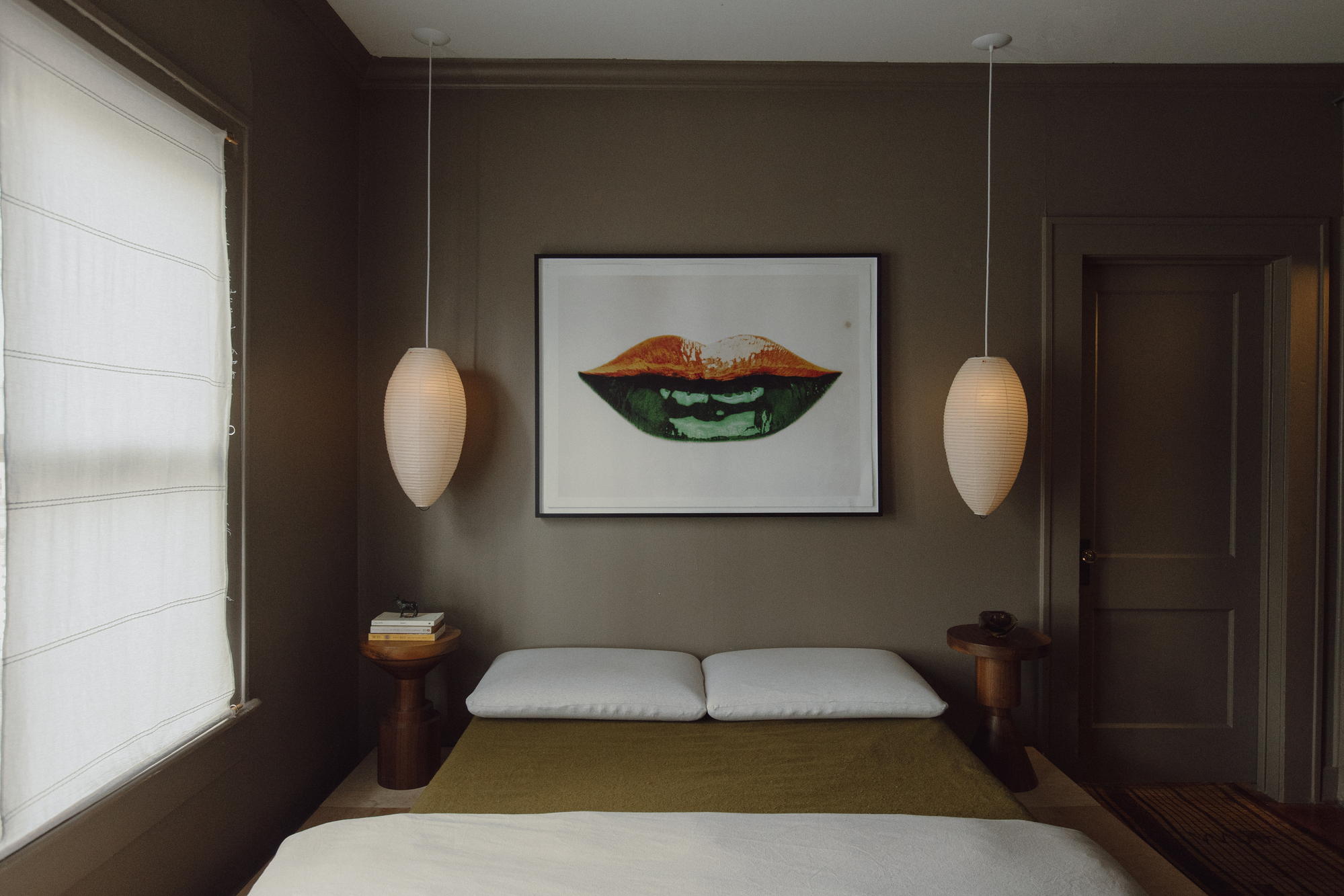
The world of lighting hasn't escaped advances in technology, and when it comes to bedroom trends, incorporating a few of the latest innovations in smart lighting can be a great way to ensure you get the very most out of your space.
"Human-centric lighting systems mimic natural daylight cycles, adjusting brightness and color temperature throughout the day to support your circadian rhythm," explains WG Hackman. "You could also opt for lights with integrated sound systems or hidden fans for multifunctionality in compact spaces."
If all this sounds a little complicated, even just incorporating one or two smart bulbs can make the world of difference to the way a bedroom performs.
"The Philips Hue smart LED bulbs can be used in any lamp and dimmed and controlled with your phone," says Jennifer Jones. "The color temperature can also be adjusted — I recommend 2,500K- 3,500K for a warmer, cozier vibe."
8. Install some low-level lighting to guide the way
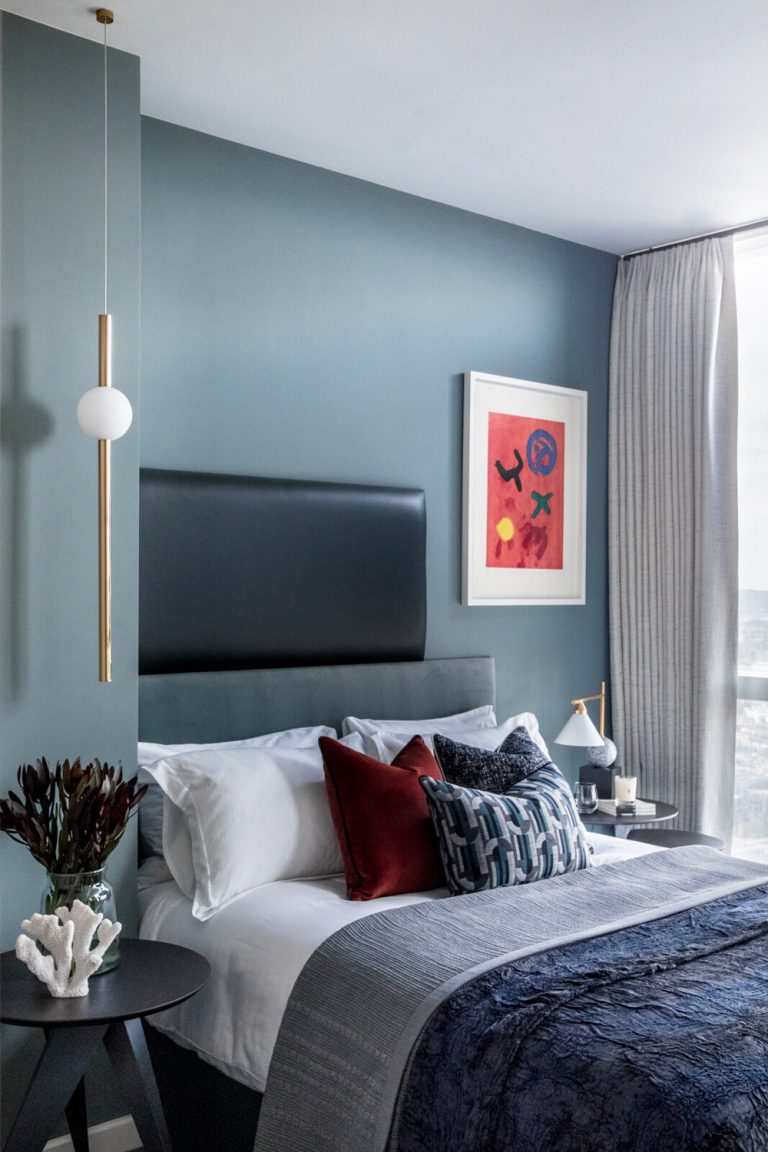
Rather than switching all the lights on if you wake in the night for a glass of water, why not fit some nightlights that will guide the way without being intrusive? Automated lighting can really help here, like these Plug Motion Sensor Lights from Amazon.
"Low-profile LED panels or smart light strips under the bed can give soft lighting at night, helping you move around without waking your partner or disrupting your sleep hormones," suggests WG Hickman. "For a unique option, try motion-activated floor lights. They gently light up when you step out of bed, so you can see without needing to turn on any switches."
9. Install multiple light switches for convenience
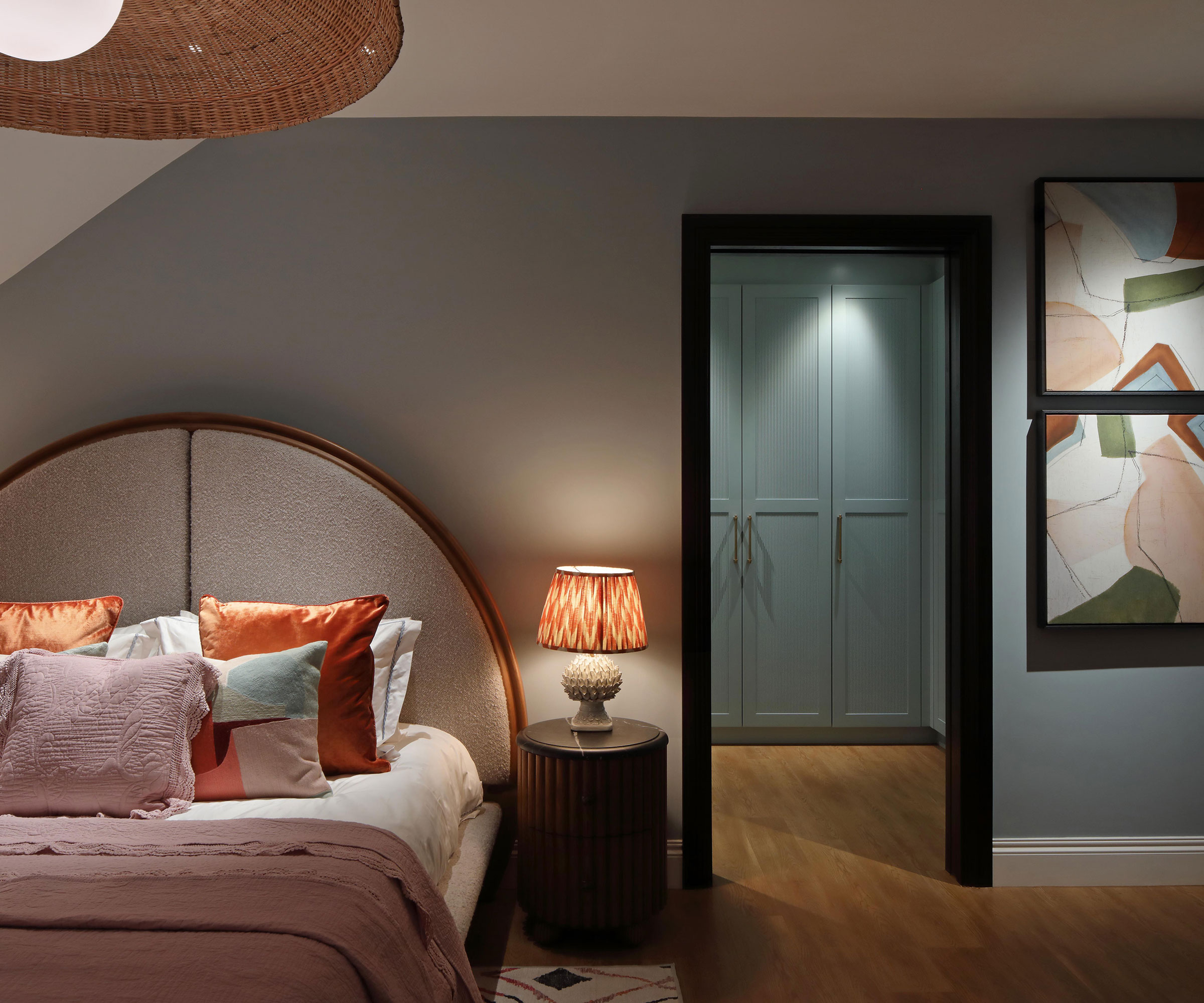
Ideally you want to be able to control your bedroom lighting not just from one switch located by the door, but also from other points in the room, particularly from the bed — even in the case of small bedroom layout ideas.
"Add three-way switches at both room entrances and near the bed for seamless control over overhead lights without crossing the room," advises WG Hickman.
And for those people out there who want to forgo switches altogether, there are now smart options that make it possible to control all your lights via remote control or using apps on your smart devices.
10. Implement a little color therapy through your lighting
It isn't just the temperature and brightness of bedroom lighting that can help create a calm, romantic, yet practical, space — the color of your lighting can also play a part.
"Use colored smart bulbs to create a completely immersive ambiance, for example soft pinks for romance, or calming blues for meditation," says WG Hickman. "Layering doesn’t have to mean just brightness — play with shadow and texture by using patterned lampshades or light projectors that cast interesting designs onto walls or ceilings for a dreamy, otherworldly effect."
We love the Linkind Smart Light Bulbs from Amazon which can also be controlled using Alexa and Google Home. Be sure to explore the most romantic bedroom color ideas to further add to the effect.
FAQs
How do I arrange my bedroom lights?
The way in which you arrange your bedroom lighting obviously needs to take into account its size and layout, but there are a few helpful rules to bear in mind, whether you are dealing with small bedroom ideas or those that are on the larger side.
"Ceiling lights in a bedroom should blend functionality with aesthetics," explains Luke Thomas, design director at John Cullen Lighting. "A pendant light or an uplight placed on top of cupboards can serve as a general light source, while downlights can help illuminate specific areas such as the end of the bed or reflect light off cupboards for a more diffused effect.
"It is important to control each light source individually to create the desired ambiance and avoid glare, especially when lying in bed."
How many lights should you have in a bedroom?
Again, this very much depends on the size of the room and the way in which it is arranged. If you only have a small bedroom, one source of general lighting and bedside lights to either side of the bed may suffice, whereas in a larger room, with a vanity for getting ready at and a seating area, will most certainly benefit from more if you want to ensure your cozy bedroom ideas become a reality.
You need to think less in the way of the number of lights, and more in the way of the number of levels of light and how bright they are.
"When planning your bedroom lighting, incorporate a mix of ambient, task and accent lights for versatility," says Dara Greaney. "Start with the main lighting and use dimmable ceiling lights or floor lights for general illumination. Then add bedside lamps, floor lamps or wall sconces for reading and to create ambiance. Aim for a total of 1500-3500 lumens for a master bedroom, or less for smaller ones."
Once you have your bedroom lighting sorted, turn your attention to how to light a dining room and get your hosting underway.
Be The First To Know
The Livingetc newsletters are your inside source for what’s shaping interiors now - and what’s next. Discover trend forecasts, smart style ideas, and curated shopping inspiration that brings design to life. Subscribe today and stay ahead of the curve.
Natasha Brinsmead is a freelance homes and interiors journalist with over 20 years experience in the field. As former Associate Editor of Homebuilding & Renovating magazine, Natasha has researched and written about everything from how to design a new kitchen from scratch to knocking down walls safely, from how to lay flooring to how to insulate an old house. She has carried out a number of renovation projects of her own on a DIY basis and is currently on the lookout for her next project.
-
 My 10 Favorite Designs at Milan Design Week 2025 — Out of the Hundreds of Pieces I Saw
My 10 Favorite Designs at Milan Design Week 2025 — Out of the Hundreds of Pieces I SawThere is a new elegance, color, and shape being shown in Milan this week, and these are the pieces that caught my eye
By Pip Rich
-
 Iridescence Is Chrome’s More Playful, Hard-to-Define Cousin — And You're About to See It Everywhere
Iridescence Is Chrome’s More Playful, Hard-to-Define Cousin — And You're About to See It EverywhereThis kinetic finish signals a broader shift toward surfaces that move, shimmer, and surprise. Here's where to find it now
By Julia Demer